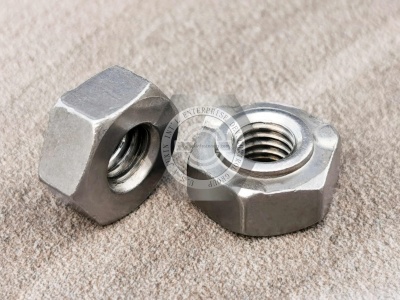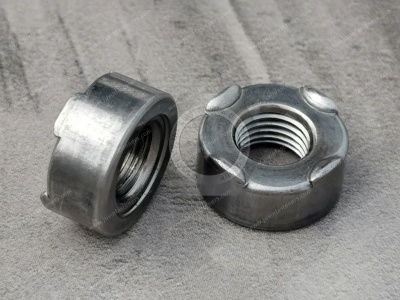Call Us
+86 136 6007 9809
Call Us
+86 136 6007 9809
May. 28, 2024
How to Use Welding Nuts?
Welding nuts are a standard fastener widely used in various mechanical devices and structures. They work by being welded to a workpiece, allowing the workpiece to be connected to other components. Here's a guide on how to use welding nuts, including preparation, the welding process, and important considerations.
Preparation Work
1. Select the Appropriate Welding Nut: Choose the proper welding nut based on the material and requirements of the workpiece. Common types include welding stud nuts and welding washer nuts, which can be selected based on specific needs and specifications.
2. Clean the Workpiece Surface: Before welding, ensure the workpiece surface is clean to guarantee the quality of the weld. Use degreasers or other cleaning agents to clean the surface, and wipe it down with a clean cloth.
The Welding Process
1. Fix the Welding Nut: Place the welding nut on the workpiece and use appropriate clamps or tools to secure it. Ensure the nut is correctly positioned and firmly fixed to avoid shifting or deformation during welding.
2. Choose the Welding Method: Based on the material and requirements of the workpiece, choose a suitable welding method. Standard methods include arc welding, gas welding, and laser welding, depending on the specific circumstances.
3. Set Welding Parameters: Adjust the welding parameters according to the nut and workpiece material and the chosen welding method. This includes setting the welding current, voltage, and time to ensure quality and stability.
4. Welding Operation: Select the proper welding position and sequence based on the size and shape of the nut and workpiece. Position the welding electrode or gun at the welding spot on the nut and workpiece and proceed with the welding operation. Maintain steady hand movements and control the welding speed and quality.
5. Check Welding Quality: After welding, inspect the quality of the weld. Visual inspection, radiographic, or ultrasonic testing can ensure the weld seam is complete, firm, and cracks-free.
Important Considerations
1. Safety Measures: Ensure safety during welding by wearing appropriate protective gear, such as a welding helmet, gloves, and safety glasses. Avoid exposure to sparks or fumes that could cause harm.
2. Control Welding Temperature: Maintain an appropriate welding temperature to prevent damage to the workpiece and nut. Choose the right temperature and speed according to the welding material's requirements.
3. Prevent Deformation: To prevent the workpiece from deforming during welding, use appropriate clamps or welding supports to stabilize the workpiece and control deformation.
4. Control the Welding Environment: Maintain a clean welding environment. Avoid wind, moisture, or other contaminants in the welding area to ensure the quality of the weld.
5. Post-Weld Treatment: Treat the weld and nut to ensure smoothness and corrosion resistance. This can include grinding, slag removal, and anti-rust treatments.


By following these steps and considerations, welding nuts can create solid and reliable connections in various applications.
For high-quality welding nuts and professional technical support, don't hesitate to contact us at adelajonly@gmail.com or visit our website at [Juxin Fasteners](https://www.juxinfasteners.com).
Contact Us
Tel.:
+86 020 8621 0320
+86 020 3121 6067
Technical Support:
Navigation
SEND INQUIREY